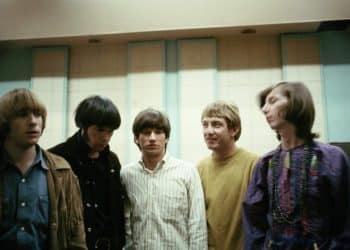Few artists have shaped the landscape of rock and roll like Mick Jagger, the iconic frontman of The Rolling Stones. With his magnetic stage presence, unmistakable voice, and lyrical genius, Jagger has captivated audiences for over six decades, cementing his legacy as one of music’s greatest legends. From swaggering anthems to heartfelt ballads, his songs have stood the test of time, transcending generations and inspiring fans to dance, sing, and embrace the rebellious spirit of rock.
But what are the defining tracks that showcase Jagger’s unparalleled talent? In this article, we take a thrilling journey through music history to unveil the top 10 most popular Mick Jagger songs of all time. These tracks are more than just hits—they’re cultural milestones, capturing the essence of an era while remaining as electrifying today as they were when they first hit the airwaves. Whether you’re a lifelong fan or a newcomer to Jagger’s extraordinary catalog, this list will remind you why his music continues to resonate across the globe.
So, crank up the volume, let the rhythm take hold, and get ready to rediscover the raw energy and timeless charisma of Mick Jagger through his most celebrated songs!
1. “Sympathy for the Devil” (1968)
“Sympathy for the Devil,” released on Beggars Banquet in 1968, stands as one of The Rolling Stones’ most audacious and powerful tracks. With its samba-inspired beat, the song stands out as a unique fusion of rock, rhythm, and provocative storytelling. The song is narrated from the perspective of Lucifer himself, as he recounts his presence at pivotal moments in history—from the crucifixion of Christ to political upheavals and wars. Mick Jagger’s vocal performance is chilling and captivating, weaving through the narrative with a sinister yet charismatic tone that perfectly matches the song’s dark subject matter.
The hypnotic rhythm, combined with the song’s unsettling lyrics, reflects the rebellious spirit of the 1960s, a time when society was grappling with major cultural and political shifts. The track blends social commentary with mythological themes, challenging listeners to confront the darker side of human nature. Jagger’s delivery is both theatrical and menacing, adding a layer of dramatic intensity that elevates the song beyond a typical rock track. “Sympathy for the Devil” not only became one of the Stones’ signature songs but also marked a significant moment in rock music history, influencing countless artists in its wake.
2. “Gimme Shelter” (1969)
“Gimme Shelter,” released in 1969 on Let It Bleed, is an apocalyptic anthem that resonates with a sense of urgency and fear, perfectly capturing the turbulent political and social climate of the time. The song begins with a haunting guitar riff from Keith Richards, which sets the tone for the rest of the track. Mick Jagger’s vocal delivery is raw and urgent, as he sings about seeking shelter amidst an oncoming storm, both literal and metaphorical. The track is made even more powerful by the contributions of backup singer Merry Clayton, whose impassioned vocals create a sense of desperation and despair that gives the song its emotional depth.
Lyrically, “Gimme Shelter” reflects the societal chaos and unrest that defined the late 1960s, from the Vietnam War to civil rights struggles. It became a call for peace and solace amidst the violence and uncertainty of the era. The combination of Jagger’s dynamic vocals, Clayton’s soul-stirring backing, and the sharp instrumentation makes “Gimme Shelter” one of the most powerful and enduring tracks in The Rolling Stones’ catalog. This track remains a timeless anthem of resilience and survival in times of crisis, showcasing the band’s ability to capture the pulse of the times.
3. “Angie” (1973)
“Angie,” released on Goats Head Soup in 1973, represents a softer, more introspective side of The Rolling Stones. This tender ballad, unlike many of their hard-hitting rock anthems, showcases Mick Jagger’s vulnerable side as he sings about the pain of loss and the complexities of love. The acoustic melody, paired with gentle piano and orchestral arrangements, sets a wistful and heartfelt tone that complements the song’s emotionally charged lyrics.
The song’s narrative centers around the end of a relationship, with Jagger addressing “Angie” as he reflects on their past and the heartache of their separation. It’s a beautiful, melancholic track that speaks to the universal experience of heartbreak, resonating with anyone who has ever had to let go of someone they love. Jagger’s soulful delivery adds an emotional depth to the song, making it one of the most moving tracks in the band’s extensive catalog.
“Angie” became an instant classic, its universal themes of love and loss, combined with its elegant composition, ensuring its place as one of The Rolling Stones’ most memorable ballads. It’s a testament to the band’s ability to evolve and experiment with new sounds while maintaining their raw emotional honesty.
4. “Miss You” (1978)
Released in 1978 on Some Girls, “Miss You” is a genre-blending track that captures The Rolling Stones’ ability to adapt and evolve. Infused with a disco-inspired groove, this track marks a departure from the band’s usual rock style, blending funk, disco, and soul elements into a seamless and catchy anthem. With its infectious bassline and rhythmic pulse, “Miss You” became one of the band’s biggest commercial successes.
Mick Jagger’s soulful vocals give the track an emotional depth, as he sings about longing and heartache in a romantic relationship. The lyrics are simple but relatable, capturing the yearning of missing someone who’s far away. The song’s funky rhythm and catchy chorus made it a favorite on dance floors worldwide, proving that The Rolling Stones were not just rock icons, but musical chameleons able to transcend genres.
“Miss You” also highlights the band’s sense of humor and self-awareness. While it may have seemed like a departure from their usual sound, it remains quintessentially “Stones” in its rebellious spirit and energetic delivery. The track is a celebration of change, showcasing the band’s versatility while maintaining their signature swagger. It’s a timeless hit that continues to resonate with fans across generations.
5. “Start Me Up” (1981)
“Start Me Up,” released in 1981 on Tattoo You, is one of The Rolling Stones’ most electrifying and instantly recognizable tracks. Opening with a signature Keith Richards guitar riff, the song immediately grabs your attention and doesn’t let go. The song’s high-energy vibe, coupled with Mick Jagger’s infectious vocals, made it a stadium anthem and a crowd favorite that is still played at live shows to this day.
The track’s lyrics are straightforward, but they carry a powerful message about the thrill of starting anew and embracing life’s challenges. It’s a celebration of resilience, energy, and forward momentum—perfectly fitting for a band that has been at the top of the rock world for decades. The chorus, with its repeated line “Start me up,” is a call to action that gets listeners pumped up, making the track perfect for sports arenas and high-energy moments.
“Start Me Up” is a testament to The Rolling Stones’ enduring power and influence. It perfectly encapsulates the raw energy and charisma that have made the band an institution in rock ‘n’ roll. The track’s irresistible riff and infectious energy have solidified its place as one of their most iconic anthems.
6. “Brown Sugar” (1971)
“Brown Sugar,” released in 1971 on Sticky Fingers, is one of The Rolling Stones’ most provocative and edgy tracks. With its infectious riff and driving rhythm, the song immediately draws listeners in, and its raw, unapologetic energy sets the tone for the rest of the album. Lyrically, “Brown Sugar” delves into themes of race, sexuality, and historical exploitation, making it one of the band’s most controversial songs.
Mick Jagger’s charismatic vocals give the song a swaggering, rebellious tone, while the backing vocals and energetic instrumentation add to the track’s fiery atmosphere. The song’s upbeat tempo and catchy chorus made it an instant hit, reaching number one on the charts and becoming a staple of The Rolling Stones’ live performances. While “Brown Sugar” remains a favorite among fans, it also sparked debates about its provocative lyrics and the issues it addresses.
Despite the controversy, the song’s rock-solid groove and unforgettable riff make it one of the band’s most enduring hits. It’s a track that embodies the rebellious spirit of rock ‘n’ roll, capturing The Rolling Stones’ ability to challenge norms while delivering a raw and electrifying performance.
7. “Paint It Black” (1966)
“Paint It Black,” released in 1966 on Aftermath, is one of The Rolling Stones’ most haunting and intense tracks. With its dark, brooding atmosphere, the song captures a sense of despair and longing, creating a mood that is both eerie and captivating. The song opens with a distinctive sitar riff, played by Brian Jones, which adds an exotic, almost hypnotic quality to the track.
Lyrically, “Paint It Black” delves into themes of grief, loss, and the desire to escape from emotional pain. Mick Jagger’s vocal delivery is raw and impassioned, as he sings about the anguish of losing a loved one and the inability to move on. The intensity of the lyrics is matched by the music, which builds in intensity, with the sitar, drums, and guitars all working together to create a dense, powerful sound.
“Paint It Black” was a significant departure from the band’s earlier sound, incorporating Indian influences into their rock ‘n’ roll style. The track became a major hit, reaching the top of the charts, and remains one of The Rolling Stones’ most unique and enduring songs. Its dark, hypnotic atmosphere continues to captivate listeners, cementing its place in rock history.
8. “Wild Horses” (1971)
“Wild Horses,” released in 1971 on Sticky Fingers, is a soulful and tender ballad that explores themes of love, longing, and the bittersweet nature of relationships. The track showcases a more vulnerable side of The Rolling Stones, with Mick Jagger delivering one of his most heartfelt vocal performances. The song’s gentle acoustic guitar riff and delicate piano accompaniment create a sense of intimacy, while the emotional depth of the lyrics adds weight to its meaning.
Lyrically, “Wild Horses” speaks to the difficulty of holding on to love and the inevitability of letting go. Jagger’s soulful delivery conveys a sense of yearning, as he sings about a relationship that is slipping away. The song’s reflective mood and poignant lyrics have made it a fan favorite, and it remains one of the band’s most emotional tracks.
“Wild Horses” is a timeless ballad that highlights the band’s versatility and ability to create songs that resonate on a deeply personal level. It’s a beautiful and heartfelt track that stands in stark contrast to the band’s more raucous rock anthems, showcasing their ability to convey complex emotions through music.
9. “You Can’t Always Get What You Want” (1969)
“You Can’t Always Get What You Want,” released in 1969 on Let It Bleed, is one of The Rolling Stones’ most uplifting and enduring anthems. The track begins with a mellow choir arrangement, slowly building into a gospel-inspired chorus, while Mick Jagger’s reflective lyrics speak to the uncertainty and unpredictability of life. The song’s message is one of acceptance, as it encourages listeners to embrace life’s imperfections and the fact that they can’t always control their outcomes.
The combination of the gospel choir and Jagger’s introspective vocals creates a powerful, emotional impact that resonates with listeners. The song is about finding peace in the face of disappointment and realizing that what we need may not always align with what we want. The band’s ability to blend rock, gospel, and pop elements into one cohesive track highlights their versatility and creativity.
“You Can’t Always Get What You Want” remains a classic anthem, with its timeless message of resilience and acceptance. It is a testament to The Rolling Stones’ ability to craft songs that are both musically rich and lyrically profound, making it one of the most beloved tracks in their catalog.
10. “Dancing in the Street” (1985)
“Dancing in the Street,” released in 1985 as a duet with David Bowie for the Live Aid charity, is an energetic and exuberant cover of the Motown classic originally recorded by Martha and the Vandellas. The track captures the spirit of unity, celebration, and joy, as Jagger and Bowie’s chemistry fills the song with infectious energy. Both performers bring their unique styles to the track, with Jagger’s lively vocals and Bowie’s cool, charismatic delivery blending perfectly to create an electrifying performance.
The song’s upbeat tempo and catchy rhythm make it an instant feel-good anthem, perfect for raising spirits and bringing people together. As a charity single for Live Aid, it became a symbol of hope and solidarity, capturing the ethos of the event itself. The collaboration between Jagger and Bowie was a historic moment in music, as both were giants of rock, and their voices coming together was a true celebration of music’s power to unite.
“Dancing in the Street” became a global hit, spreading positivity and joy wherever it was played. Its infectious energy and timeless message continue to make it a favorite at celebrations and events around the world.









